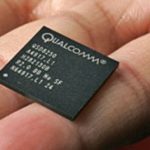
If you work in the medical field, you know that the amount of information that must be recorded and stored is staggering. In addition, that information is usually confidential, or at least sensitive, for patients. In a pharmacy setting, employees are responsible not only for the handling of prescriptions and medical supplies but also for customer service functions such as explaining how to use medication and processing payment. This is a tremendous responsibility, but the good news is that this procedure can be streamlined. Electronic signature capture for pharmacies allows employees to do their jobs while speeding up payment and maintaining confidentiality.
What Does an Electronic Signature Capture Device Do?
Devices that allow electronic signature capture for pharmacies perform two essential functions. First, they work the same way that any other commercial debit or credit card processor does. The customer swipes their card or inserts their chip-enabled card, payment is submitted and approved electronically, and the customer uses a stylus pen to write their signature on a screen.
The second function is to allow a patient to acknowledge electronically both receipt of prescriptions, and that a pharmacist has explained how a medication is to be used as required by law or at least offered to explain that.
How Does It Work?
Electronic signature capture for pharmacies is accomplished by a few systems working together. EMV/chip technology works with point-of-sale software and a payment processor. As far as the physical capturing of the signature, that is accomplished by an LCD display that has a senor panel fitted underneath it. The signature stylus pen can be either wireless or tethered to the console. When pressure is applied, a digital drawing of the signature may or may not appear, depending on the model. This is then stored and typically printed on a receipt.
Is it Secure?
In the year 2000, Congress signed the Electronic Signatures in Global and National Commerce Act. This bill both recognized electronic signatures as legally acceptable and binding while adding stipulations for security measures to be put in place for them. In the two decades since, software and technology companies have built ever-advancing encryption safeguards into all standard signature capturing devices and software that measure the pressure of each stroke and record it, while ensuring it cannot be tampered with after the fact. In some ways, an electronic signature is more secure than one written in ink!
Electronic capture is an efficient and safe way to move your customers through the pharmacy, process payment, and store records.


